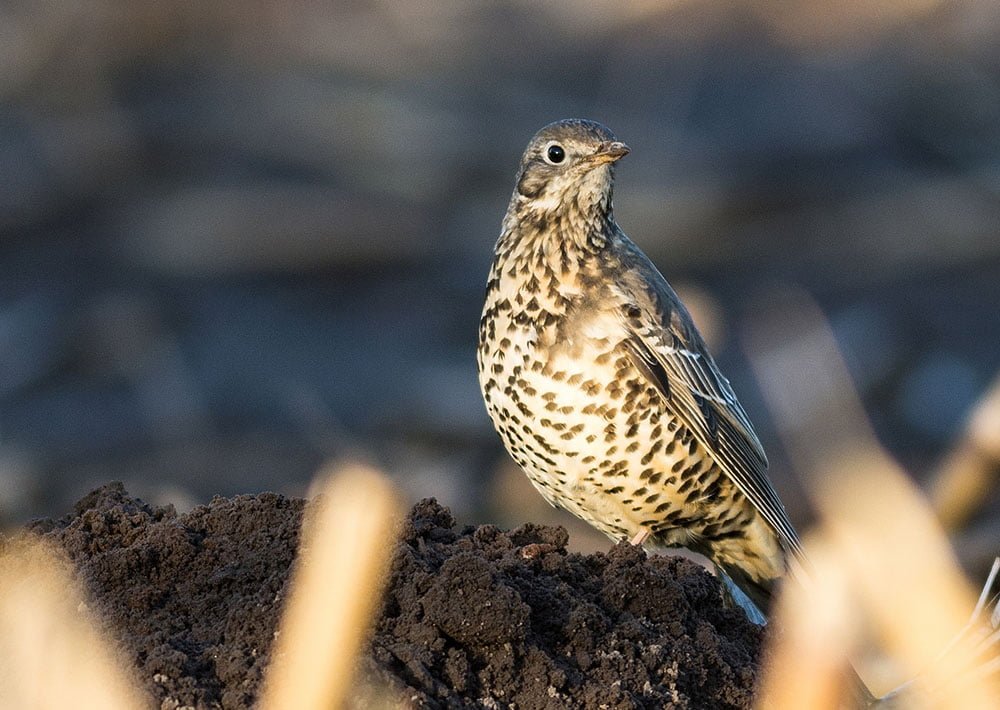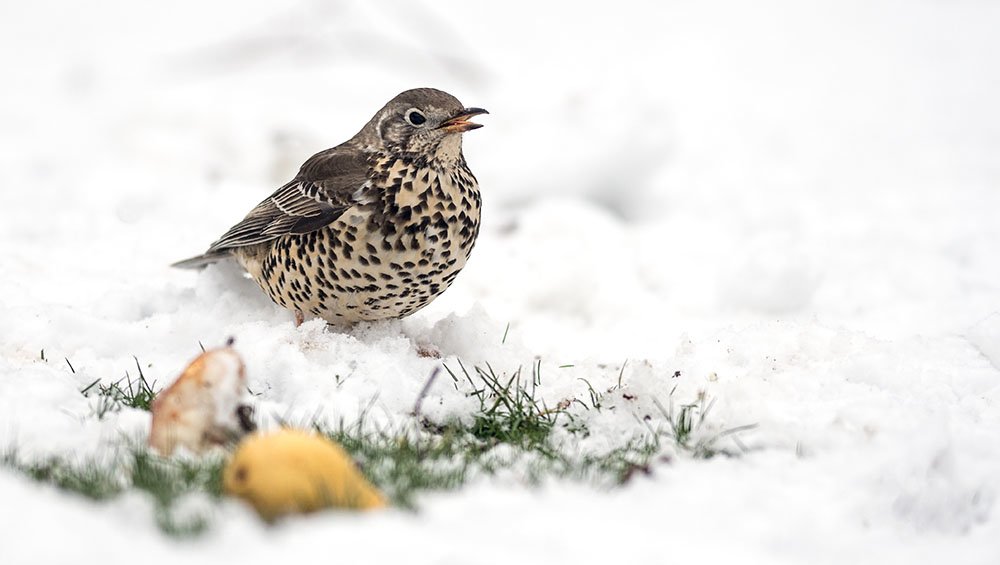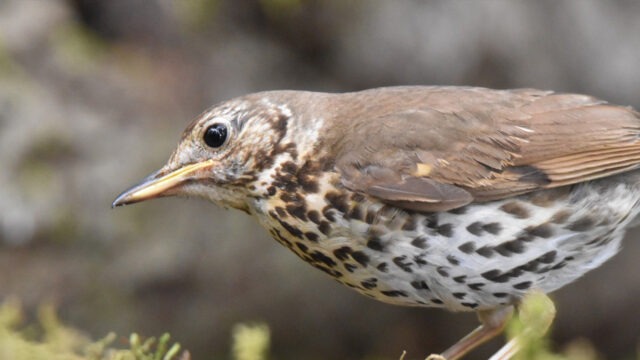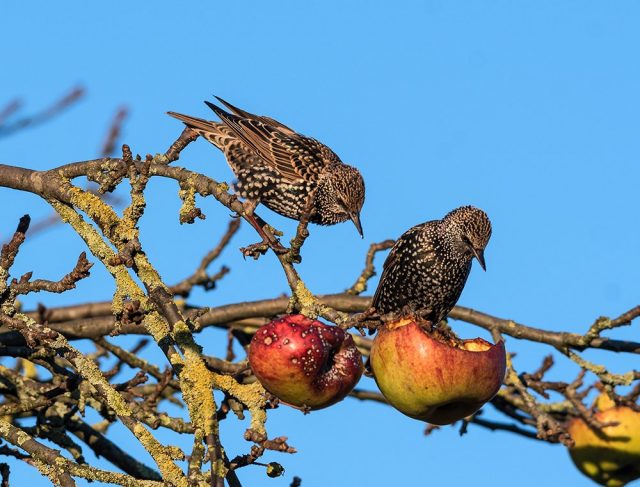Overview
The mistle thrush is a widespread species in the UK. They feed in open spaces such as fields, open woodland, parks and large gardens, moving along the ground with strong hops and an alert upright posture. They normally feed on the ground taking snails and worms, insects, ants, larvae, fruit and berries. A mistle thrush will often aggressively defend its ‘own’ fruiting berry tree in winter when times are hard and food scarce. This seems to be a good tactic as there is evidence that defending their food supply enables the mistle thrush to get an early start in the breeding season and produce larger clutches on average than birds that do not behave in this way.
It is resident throughout the year in Britain with migrants arriving here from northern Europe for winter. They breed where there are large mature trees and open ground. Generally a rather wary shy bird, the mistle thrush usually prefers to keep its distance from people. It can often be seen perched high at the top of a tall tree. Also look out for flocks in July and August. They fly with long deep undulations with quick wing beats and short glides.
Description
Our largest thrush, the mistle thrush has a slightly heavy or disproportionate look: the head is quite small in relation to the bulky solid ‘barrel-chested’ body. It sports the characteristic spotty thrush chest markings similar to the Song Thrush. The roundish spots on the breast and underparts (not arrow-head like the song thrush) are black or dark brown and randomly arranged on a very pale background colour. Upper parts are sandy brown and paler than that of the song thrush, in fact the overall mistle thrush plumage is much paler than the song thrush. It also has a paler greyish ‘face’ and white or pale eye ring which tends to emphasise its black eyes. In flight the underwings (‘armpits’) are white and not orange-brown like the song thrush’s.
Call & Song: The main mistle thrush call sounds very much like a football rattle – a drawn-out dry rattle, though nobody knows what team he supports! The song is fast loud and ringing but not mellow and flutey like the blackbird or song thrush. It does not repeat phrases and is faster with less variation or tonal-range than either of his cousins, so tending to sound more monotonous.
Latin name: Turdus viscivorus
Size: 26 – 29 cm
In The Garden
Mistle thrush have declined in numbers over recent decades, down 35% in the past 25 years according to the British Trust for Ornithology (BTO). Mistle thrushes visit gardens occasionally but are more often seen at the top of a nearby tree or TV aerial or flying overhead. They are a bird that generally prefers to feed in open spaces so are more likely to venture onto the ground in larger rather than small gardens (individually or in small numbers) if there is suitable food to tempt them. In years when berries are in short supply in the countryside they are more likely to show up in back gardens, so be sure to put food out especially in severe winter weather and keep an eye out for them. You could plant berry-producing shrubs to attract mistle and other thrushes, and if your garden or hedge has hawthorn try not to prune it unless you have to so it can supply a bumper crop of juicy berries.
Did You Know…?
The mistle thrush gets its name from a taste for mistletoe berries – the species name ‘viscivorus‘ comes from the Latin meaning ‘mistletoe‘ and ‘to devour‘.



